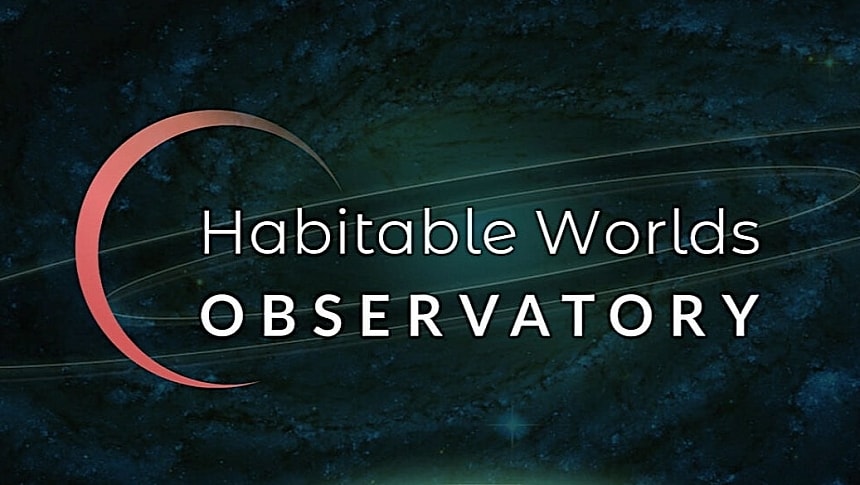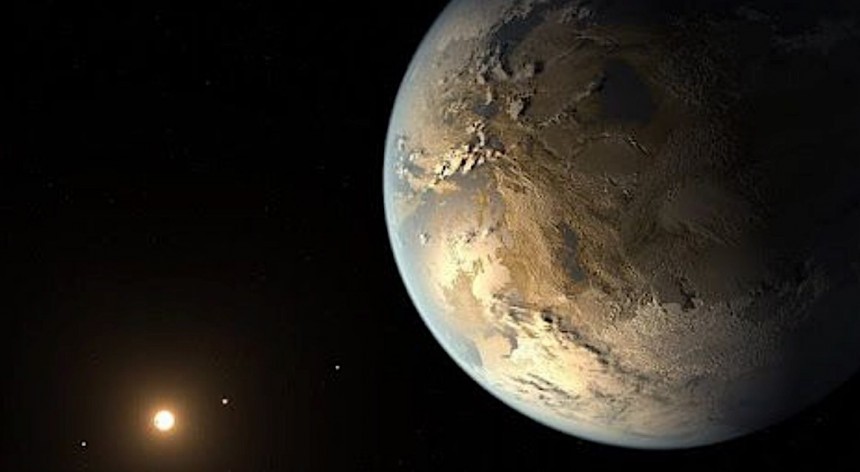There is a very high probability that in the very near future our species will have confirmed the potential for life to exist in other worlds. Granted, we'll probably not know for sure if aliens in whatever shape or form exist, but we will know for sure that life as we know it here could exist out there. And a space telescope called Habitable Worlds Observatory (HWO) will play a big role in that.
Telescopes, ground- or space-based, have been around since forever, it seems, and they've helped us understand more about the Universe and our place in it that any other tool at our disposal. But whatever these instruments were capable of doing until now pales in comparison with the capabilities of the new generation telescopes.
A generation that started with the launch of the James Webb in December 2021. By all accounts, this is the most expensive and advanced telescope ever, and the money and time invested in it have already paid off.
In the few short years it has been looking at the distant Universe from its parking spot at the second Sun-Earth Lagrange point (L2), Webb found life-supporting molecules on an exoplanet just 120 light years from Earth, discovered massive galaxies dating back to just 700 million years after the Big Bang, and gave us a better understanding of the primordial supermassive black holes. Among many, many other things, of course.
Webb is scheduled to stay operational possibly until 2031, but based on prior experience, it'll probably be alive and kicking for a lot longer than that. And while in space, it will be joined by an even more impressive telescope: the Nancy Grace Roman.
Scheduled for launch sometime in 2027, the new space observatory is intended, first and foremost, to unravel more of the Universe's mysteries, taking a very close look at things like dark energy and exoplanets.
And it will do so with a field of view that's 100 times wider than what the pre-Webb star of the telescope world, the Hubble, was capable of doing. Using this capability, as well as a 2.4 meter (7.9 feet) wide primary mirror and a couple of specialized instruments, Roman plans to find no less than 2,600 exoplanets in five years, the expected duration of the mission.
Impressive as the Webb and Roman are, neither of them is purpose-made to search for the presence of life elsewhere. The HWO, on the other hand, will use the lessons learned with both of its predecessors to do exactly that.
The concept for the telescope was announced in 2020 by the National Academies' Pathways to Discovery in Astronomy and Astrophysics, and builds on research performed for two previous telescope concepts, the Large Ultraviolet Optical Infrared Surveyor (LUVOIR) and Habitable Exoplanets Observatory (HabEx).
HWO is envisioned as a large ultraviolet, optical, and infrared space telescope whose main mission will be to "identify potentially habitable planets around other stars, closely examining their atmospheres to determine if life could possibly exist."
It this respect, it will be the first ever human-made telescope specifically designed to find Earth-like planets in other solar systems, located near Sun-like stars, and to scan them for potential signs of life.
For the task of finding planets, the telescope will use a large mirror (unclear how large yet), but also a coronagraph – that's an instrument meant to block the light of a star and allow a better view of a nearby object. In this case, the coronagraph needs to be "thousands of times more capable than any prior space coronagraph." A stable optical system that moves no more than the width of an atom is also required.
Once a planet is located, the telescope will use spectroscopy to find biosignatures, which basically translates into gases produced through biological processes, such as oxygen or methane.
Because of the scale of the project, the upcoming telescope will not be used solely to find life on alien worlds. It will also have a look at how galaxies have evolved over the course of the Universe's existence, and it will study the formation, distribution, and evolution of stars.
The thing will be pointed at our solar system as well, trying to "shape our understanding of the full range of planet possibilities and histories."
NASA plans for the HWO to find and study at least 25 exoplanets, but that won't happen anytime soon. The telescope is presently in early planning stages, and a launch is not considered until at least the 2040s.
But things are moving in the right direction. In the fall of last year two committees were established by NASA with the goal of "exploring the mission's science objectives and the technologies that will enable them."
In May 2024 the American space agency announced it selected three of the industry proposals meant to back the creation of the HWO: an ultra-stable optical system (BAE Systems), integrated modeling infrastructure (Lockheed Martin), and maturing technologies that support telescope features (Northrop Grumman). Work on the concepts is scheduled to begin this summer, and it will cost the agency $17.5 million over the next two years.
A generation that started with the launch of the James Webb in December 2021. By all accounts, this is the most expensive and advanced telescope ever, and the money and time invested in it have already paid off.
In the few short years it has been looking at the distant Universe from its parking spot at the second Sun-Earth Lagrange point (L2), Webb found life-supporting molecules on an exoplanet just 120 light years from Earth, discovered massive galaxies dating back to just 700 million years after the Big Bang, and gave us a better understanding of the primordial supermassive black holes. Among many, many other things, of course.
Webb is scheduled to stay operational possibly until 2031, but based on prior experience, it'll probably be alive and kicking for a lot longer than that. And while in space, it will be joined by an even more impressive telescope: the Nancy Grace Roman.
Scheduled for launch sometime in 2027, the new space observatory is intended, first and foremost, to unravel more of the Universe's mysteries, taking a very close look at things like dark energy and exoplanets.
Impressive as the Webb and Roman are, neither of them is purpose-made to search for the presence of life elsewhere. The HWO, on the other hand, will use the lessons learned with both of its predecessors to do exactly that.
The concept for the telescope was announced in 2020 by the National Academies' Pathways to Discovery in Astronomy and Astrophysics, and builds on research performed for two previous telescope concepts, the Large Ultraviolet Optical Infrared Surveyor (LUVOIR) and Habitable Exoplanets Observatory (HabEx).
HWO is envisioned as a large ultraviolet, optical, and infrared space telescope whose main mission will be to "identify potentially habitable planets around other stars, closely examining their atmospheres to determine if life could possibly exist."
It this respect, it will be the first ever human-made telescope specifically designed to find Earth-like planets in other solar systems, located near Sun-like stars, and to scan them for potential signs of life.
For the task of finding planets, the telescope will use a large mirror (unclear how large yet), but also a coronagraph – that's an instrument meant to block the light of a star and allow a better view of a nearby object. In this case, the coronagraph needs to be "thousands of times more capable than any prior space coronagraph." A stable optical system that moves no more than the width of an atom is also required.
Because of the scale of the project, the upcoming telescope will not be used solely to find life on alien worlds. It will also have a look at how galaxies have evolved over the course of the Universe's existence, and it will study the formation, distribution, and evolution of stars.
The thing will be pointed at our solar system as well, trying to "shape our understanding of the full range of planet possibilities and histories."
NASA plans for the HWO to find and study at least 25 exoplanets, but that won't happen anytime soon. The telescope is presently in early planning stages, and a launch is not considered until at least the 2040s.
But things are moving in the right direction. In the fall of last year two committees were established by NASA with the goal of "exploring the mission's science objectives and the technologies that will enable them."
In May 2024 the American space agency announced it selected three of the industry proposals meant to back the creation of the HWO: an ultra-stable optical system (BAE Systems), integrated modeling infrastructure (Lockheed Martin), and maturing technologies that support telescope features (Northrop Grumman). Work on the concepts is scheduled to begin this summer, and it will cost the agency $17.5 million over the next two years.








